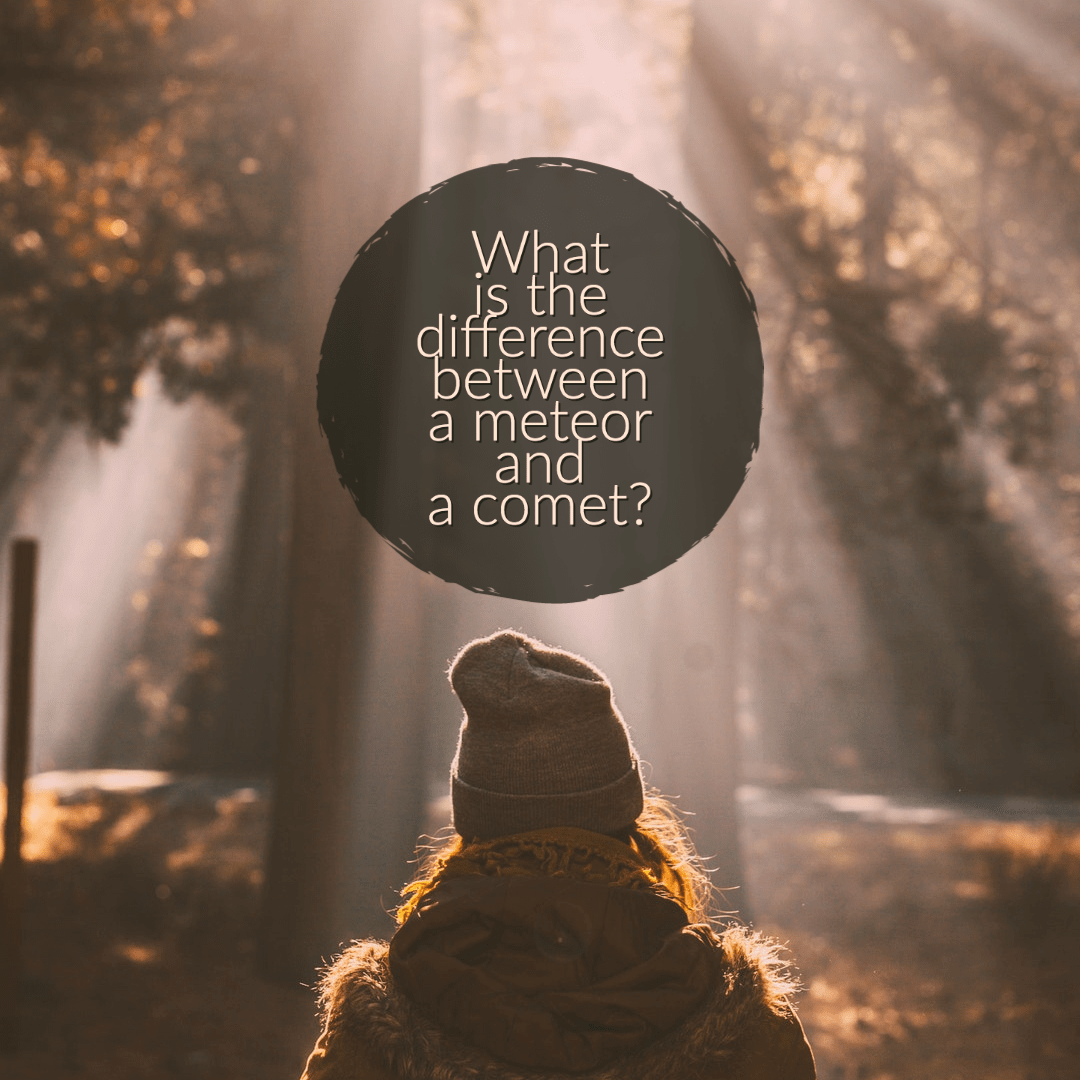Meteors are small bits of metallic material that are usually scarcely larger than bits of gravel but are sometimes large enough to weigh many tons or kilos. It is speculated by researchers that some meteors are parts of broken-up comets, which are larger in size. A fascinating thing about meteors is that we never see them unless they come into contact with the dense air of the Earth’s atmosphere and are set on fire by friction. The process produces a “tail” for the meteor as it descends towards the ground. Most of the meteors burn themselves out in the air, but sometimes they do fall on Earth, and when geologists find these objects, they call them meteorites. A meteorite is a term used to indicate a small object that came from outer space and descended on Earth, and this object could be considered debris that came from an asteroid or a comet.
A comet looks rather like a star with a long tail, and it usually moves in a long, oval orbit or path around the Sun. However, unlike meteors, comets do not descend on the Earth’s atmosphere, as it rather stays in space. A comet has three distinct parts, and these are the nucleus, the coma, and the tail. The nucleus is made up of a cluster of meteors, allowing it to become bigger than a meteorite, although, from the perspective of a human, it appears to have the same size as meteors. The coma, the second part, is a veil of thin gasses and stardust that surround the nucleus. The long and shining tail part is a cloud of particles that are repelled by the Sun’s light. Some comets would have more than one tail, depending on its size and speed. All of the comet’s light on its coma and tail comes from the Sun, and as the comet gets nearer to the Sun during its travels, it shines more and more brightly from afar.
A comet may take a long time before it can reach the Earth’s vicinity. In fact, the path of the comet is so long that we may see one only once in fifty to two hundred years. When we see a meteor, it typically flashes across the sky in an instant, but a comet does not look to move any faster than the Moon.
What are asteroids?
Besides meteorites and comets, there is another rock-like heavenly body that comes from space, and it is the asteroid. An asteroid is a minor planet, an object in space that is smaller than a major planet and orbits around the Sun. There are about millions of asteroids that follow the same orbit, and these minor planets are grouped into the asteroid belt. This asteroid belt is located between Mars and Jupiter, although this grouping is often called the major asteroid belt in order to differentiate itself with another group of asteroids called Jupiter Trojans. These Trojan asteroids are co-orbital with Jupiter, meaning that it moves around the Sun at the same speed and distance as the biggest planet in the solar system.
According to studies, asteroids are believed to have existed before the creation of the planets on the solar system, and they are said to have been remnants of planetesimals, which were heavenly bodies that were supposed to turn into planets but were unable to because of the Sun‘s lack of power and size to transform them. But because of their composition, they were able to stay in the Sun’s orbit for millions of years despite being smaller than major planets.
Asteroids are made of different materials and substances from comets since they are formed by rocks and minerals as opposed to comets that consist of ice and dust particles. In addition, because asteroids were formed near the Sun, they were prevented from creating the ice that surrounds comets.
When comparing asteroids to meteorites, however, you would see that there was not much difference between them other than their size. The similarities could occur since meteors or meteorites are supposed to be parts of asteroids that have separated from the asteroid belt and eventually found its way in the Earth’s atmosphere. However, as previously mentioned, meteors may also exist when a part of a comet gets disengaged in the comet’s path and lands on Earth.
Additional reading:
Related posts:
